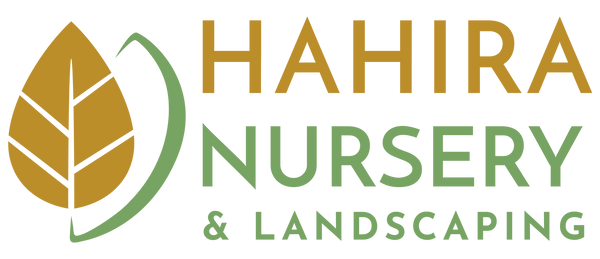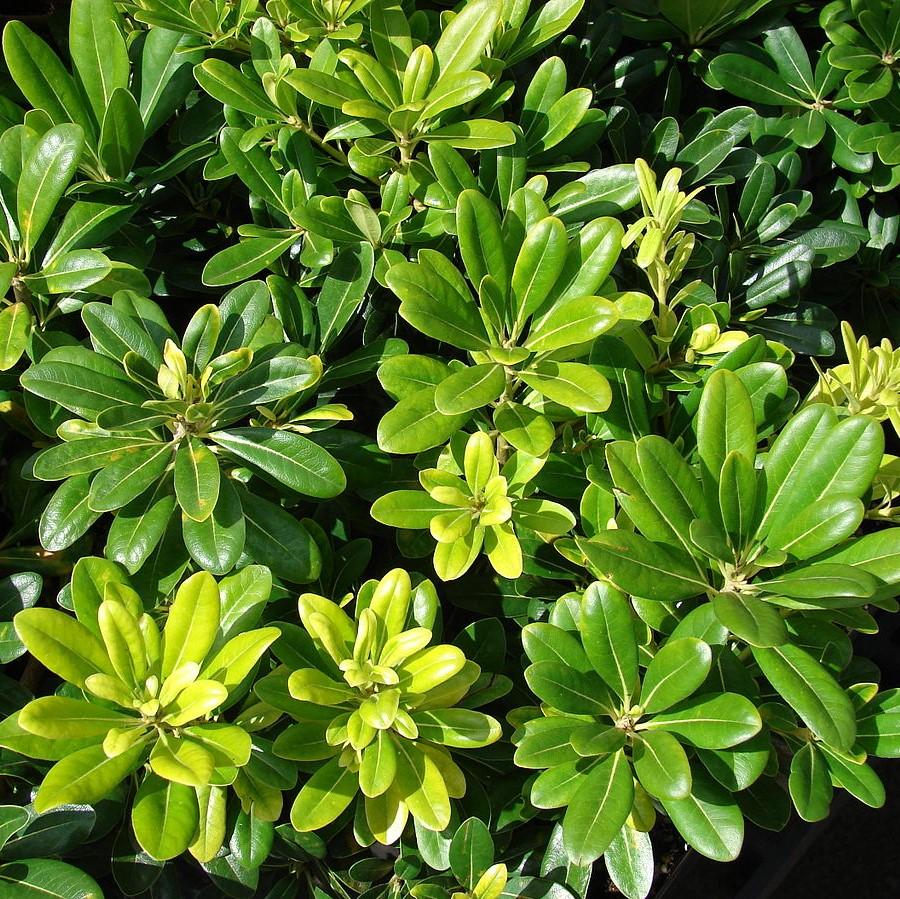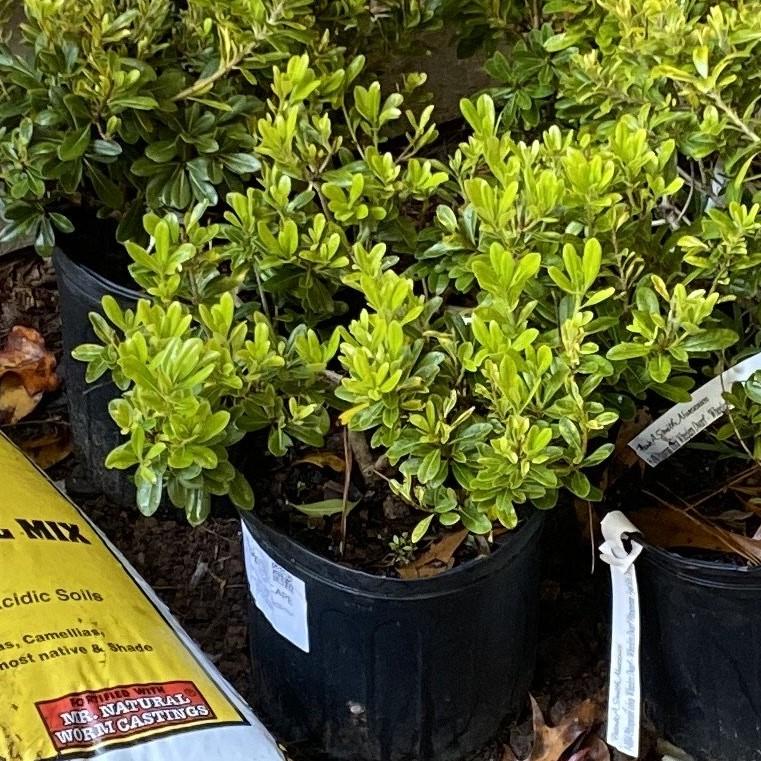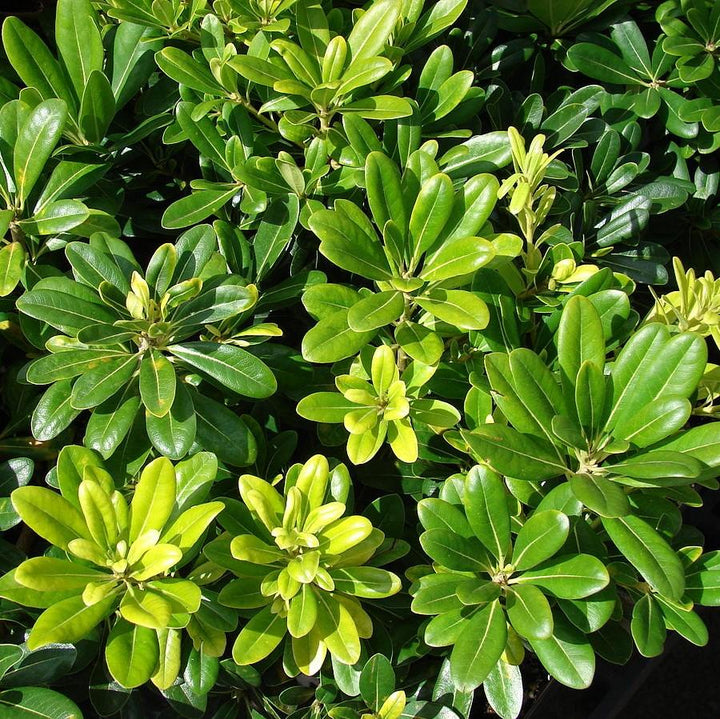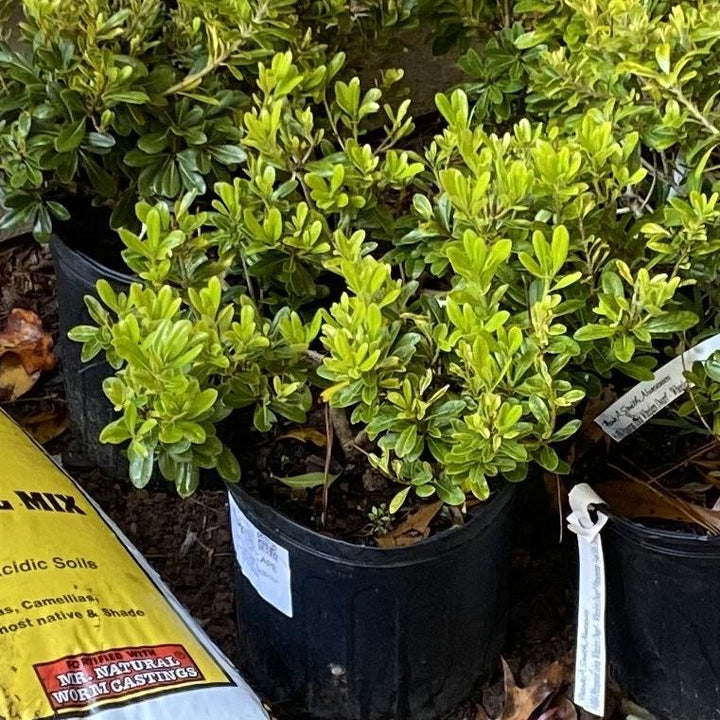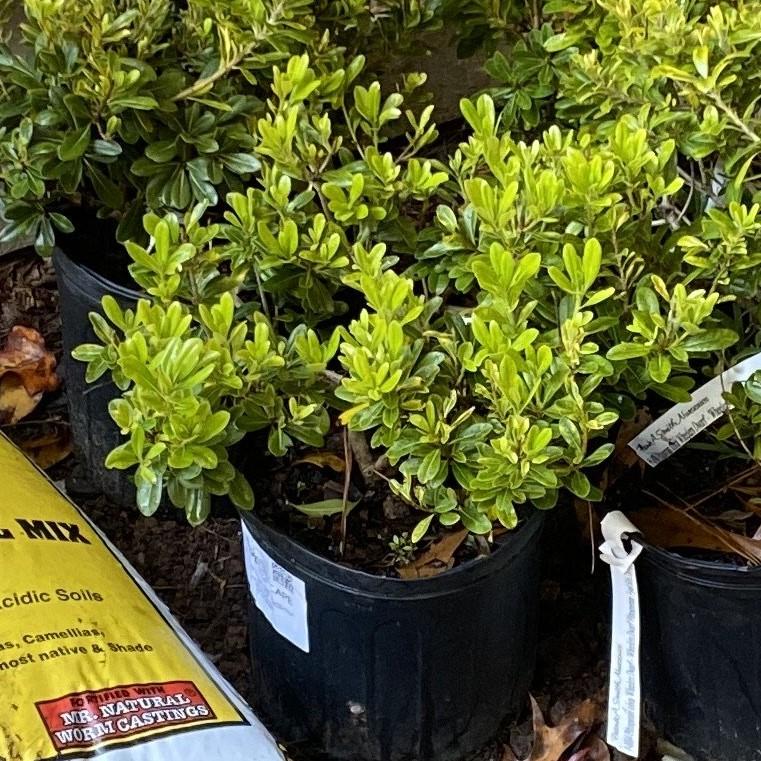Wheeler's Dwarf Pittosporum, Japanese Mock Orange
Pittosporum tobira 'Wheeler's Dwarf'
- In stock, ready to ship
- Backordered, shipping soon
- Locally Grown
Wheeler's Dwarf Pittosporum is a compact evergreen shrub with dense glossy dark green foliage and yellow-green new growth. Tiny clusters of fragrant white flowers bloom in spring. Grows best in part sun and slightly acidic well-drained soils. Drought tolerant once established.
|
Type: |
|
|
Height: |
2' - 3' |
|
Spread: |
3’ - 5' |
|
Spacing: |
4’ |
|
USDA Hardiness Zone: |
8 - 11 |
|
Culture: |
|
|
Bloom Color: |
White |
|
Season of Interest: |
MAINTENANCE NEEDS: Low Maintenance. Water regularly. Watch for leaf spot, blight and crown/root rot.
LANDSCAPE USES: Accents or Group Plantings, Borders, Woodland Gardens, Hedges, and Containers.
COMPANION PLANTS: Agapanthus, Heavenly Bamboo, Loropetalum
IMAGE: Forest & Kim Starr, Starr 070906-8451 Pittosporum tobira, CC BY 3.0
*As plants have ranges in appearance they may not appear as the images shown
Hahira Nursery takes pride in growing high-quality, fresh, healthy plants and ensuring they are delivered safely, on time, and with little to no damage so they are ready to be planted.
Despite all of our best efforts, once the plants have left our nursery, there are many variables outside of our control that can cause plants, flowers, trees, shrubs, or grasses to not thrive as they should. Plants are living organisms and are susceptible to a number of different environmental and care factors that are outside of our control.
Our goal is to build strong relationships with our customers and we always want to make things right, but we cannot always guarantee what happens once the plants are outside of our nursery, how you care for the plants, if they’re in the correct growing zones, weather damage, soil conditions, insect infestations, etc..
If you have any questions or concerns about a purchase you’ve made, please email us at info@hahiranursery.com and we will work with you on a case-by-case basis to the best of our ability.
Please note that all living organisms are not identical and their coloring, size, and shapes may differ from what you see online in our store. Each plant has its own characteristics that are impacted by the time of year, growth cycle, weather, and other elements which will cause them to look different than their photos.
